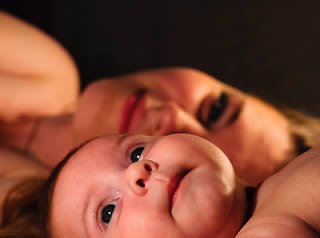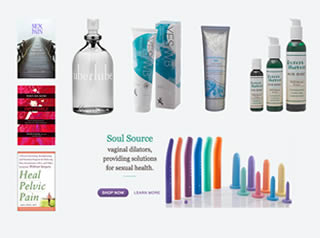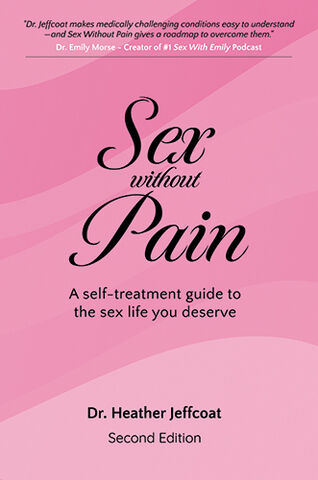Lasers And My Vagina - Do They Really Belong Together?
A Breakdown of common Energy Based Devices Marketed for your Vagina
Risks and Possible Benefits
In the past decade, nonsurgical devices using radio-frequencies, lasers, and infrared light have been marketed as non-invasive treatments for “vaginal rejuvenation.” However, there has been conflicting opinion among the medical community as to what the lasers have evidence of treating. The rampant use of the lasers to treat conditions they have not been approved to treat has also caused the Food and Drug Administration to warn the public about these devices in 2018.
What are EBDs?
Energy-based devices are a group of medical devices that utilize different types of lasers or radiofrequencies affect the tissues of the body.
The umbrella term for these procedures and devices is “Energy Based Devices” but while all the procedures and devices use some kind of tool, there are different technologies out there, each with a slightly different mechanism of action, depth at which they affect your tissues, and with different outcomes.
These lasers are often used in other areas of medicine, including dermatology. The lasers, in some cases, may contribute to the body’s ability to heal wounds, stimulate collagen and form elastin fiber.
Types of “Lasers”
According to AUGs, most vaginal EBD laser treatments are classified as either ablative and nonablative in their mechanism of action; however, some laser technologies use a combination of the mechanisms.
- Ablative lasers burn a grid of tiny holes on the surface tissue, which then induces a healing response, leading to increase in collagen, elastin, and glycogenated cells. CO2 lasers are a common ablative laser marketed for vaginal use.
- Nonablative lasers and radio frequency work by heating up the underlying tissue and increasing heat shock proteins and collagen production without harming the surface. Examples: nonablative erbium-doped yttrium aluminum garnet (Er:YAG) lasers.
- Radiofrequency vibrates molecules, which creates heat, and stimulates collagen (elasticity) production as well as blood flow.
Popular Brands of EBDs
- Mona Lisa Touch: CO2: Laser (ablative)
- THERMIVa: Radiofrequency
- FemiLift: CO2: Laser (ablative)
- IntimaLase: Er YAG laser (nonablative)
- Protege Intima: Radiofrequency
- Pellevé® S5 System: Radiofrequency
- IncontiLase: Er YAG laser (nonablative)
- CO2 RE Intima: CO2 laser (ablative)
- FemiTight: CO2 laser (ablative)
- Ultra Femme 360: Radiofrequency
- Viveve: cryogen-cooled monopolar radiofrequency (CMRF)
- Venus Fiore: Radiofrequency
- Exilis Ultra Femme: Radiofrequency
- JOULE: Er YAG laser (nonablative)
Beware of False Claims
Many of the laser companies claim on their websites that the CO2 fractional laser may be a treatment for a variety of post-partum/lactational incontinence, and dyspareunia in geno typical women with breast cancer, even though no data have been published on these unique patient populations, nor are there any high-quality clinical trials to support these claims. Be wary of using laser treatments that are being used "off label" for issues when no high-quality research has been completed.
What’s the Evidence?
Evidence is limited. Based on review of the medical literature in all published trials to date, only several hundred geno typical women have been studied and most studies are only 12 weeks in duration. Another limitation of these short-term studies is that the potential risk of long-term complications, such as scarring is not addressed. Patients were not monitored for concurrent use of intravaginal products or systemic medications that could affect vaginal and vulvar health. Over-the-counter moisturizers, lubricants, prescribed local estrogen products, or systemic hormones could have contributed to any observed improvements with these treatments.
What the Experts Say:
Food and Drug Administration (2018)
In 2018, the Food and Drug Administration (FDA) released a warming against the use of certain energy-based devices that perform vaginal rejuvenation.
…growing number of manufacturers marketing “vaginal rejuvenation” devices…claiming to treat symptoms related to menopause, urinary incontinence or sexual function.”
“These products have serious risk and don’t have adequate evidence to support their use”
“Deeply concerned women are being harmed…deceptive marketing of a dangerous procedure with no proven benefit, including women who’ve been treated for cancer, is egregious.”
American College of Obstetricians and Gynecologists
Position Statement, January 2020
The American College of Obstetricians and Gynecologists’ January 2020 position statement echos the FDA’s safety warning and adds that while there is not a sufficient amount of large scale, peer-reviewed research to understand the true benefits and harms of these procedures.
Scant information on the outcomes (risks and benefits) of laser assistance, rugation restoration, or G-spot amplification exists in the peer-reviewed literature, and the published data are mostly restricted to expert opinion, case reports, or small case series.”
“A 2012 prospective observational study of vaginal rugation restoration included only 10 women who underwent the procedure, making it difficult to draw conclusions.”
“The FDA's 2018 Safety Communication warned against the use of energy-based devices (commonly radiofrequency or laser) to perform vaginal “rejuvenation,” cosmetic vaginal procedures, or nonsurgical vaginal procedures to treat symptoms related to menopause, urinary incontinence, or sexual function.”
“Prospective studies that used validated measures of quality of life, body image, and sexual function are needed to understand the true benefits and harms of these procedures. Research should be conducted by those without a financial interest in the outcomes.”
American Urogynecologic Society (AUGS)
Clinical Consensus Statement May 2020
In May 2020, AUGS released the most detailed report, stating some general consensus statements agreed upon by AUGS members in regards to vaginal EBDs. Read the above article for the complete report, however, here are some highlights:
- EBD therapy has demonstrated short-term efficacy in addressing medical menopause-related conditions of vaginal atrophy and menopausal dyspareunia for up to 1 year. Note that the evidence shows benefit for up to one year, medium- long-term effects are unknown.
- EBD has a positive effect on sexual function in the short term. The positive effect on sexual function after laser treatment remained unchanged throughout the 12 months of follow-up. Long term effects are unknown.
- EBD therapy may be effective for the treatment of lichen sclerosus. A series of case studies have suggested that CO2 laser and one random control trial suggested that Nd:YAG laser was more effective in treating lichen sclerosus than topical corticosteroid. However, more studies are needed for this to be conclusive.
- EBD therapy has shown promise in treatment of vulvo-vaginal atrophy, vaginal dryness, and menopausal dyspareunia. However, again, the research studies were small and limited in scope.
- It is NOT known if EBD therapy offers better success rates than PFE or midurethral slings for treatment of stress urinary incontinence. Prospective case series and placebo/sham-controlled studies on EBD have shown conflicting results.
- EBD therapies are NOT known to be effective in the treatment of fecal incontinence.
- There are NO objective data on the effect of EBD therapy on vulvar or vaginal appearance. AUGS is not aware of any long-term credible studies that have objectively examined the effect of EBD therapy on vulvar or vaginal appearance.
- Potential negative side effects of EBD therapy may include
- Increase in vaginal discharge
- Vaginal spotting immediately after treatment
- Bacterial vaginosis
- Urinary tract infection
- Discomfort at the sight of treatment
- Vaginal scarring
- Vaginal burning
In Short
According to AUGs, EBD’s may help with the following conditions
- Vulvo-vaginal atrophy
- Vaginal dryness
- Pain with penetration associated with menopause
What Lasers DO NOT fix
- AUGs made came to no consensus regarding the efficacy of EBDs in treating prolapse, vulvar or vaginal appearance, incontinence (urinary or fecal), or pain with penetration that is not associated with menopause.
Before Receiving EBD Treatment
Have a Full Gynecological Exam
Before considering EBD therapy, your doctor should perform a complete exam, discuss treatment options with you, and clear you from the absolute contraindications to energy-based devices (EBDs).
EBD is contraindicated to:
- Pelvic cancer
- Recent pelvic surgery
- Active infection
- Active vulvar or vaginal lesions
- Problems with the cervix and cervical tissue
Make Sure Your Health Practitioner Is Qualified
EBDs should only be administered by physicians with a medical license or their supervised nurse practitioners.
Know The Risks
The FDA has not cleared or approved any energy-based medical device for vaginal “rejuvenation” or vaginal cosmetic procedures, or for the treatment of vaginal symptoms related to menopause, urinary incontinence, or sexual function.
In 2018, the Food and Drug Administration (FDA) released a warming against the use of certain energy-based devices that perform vaginal rejuvenation.
This warning was placed on the use of energy-based devices (most commonly, radio frequency or laser) due to their potential for serious adverse events, including vaginal burns, scarring, pain during sexual intercourse, and recurring or chronic pain. The American College of Obstetricians and Gynecologists echoed this warning, citing the 2018 FDA warning in their recommendation paper.
There is also little research regarding the medium and long-term effects of these laser treatments.
Discuss with your Doctor if Hormone Therapy is Right For You
According to AUGs, low-dose vaginal estrogen is the most effective therapy for moderate to severe vulvo-vaginal atrophy, vaginal dryness, and menopausal
dyspareunia (pain with penetration). However certain hormone therapies may increase risk for certain cancers, including breast cancer. So, please consult with a doctor to see if you a good candidate for hormone therapy.
Explore Non-Hormonal Interventions
As we’ve written about previously on the blog, there are various non-hormonal interventions for vaginal dryness and menopausal pain with sex, and other symptoms for Genitourinary Symptoms of Menopause (GSM).
These non-hormonal options include vaginal moisturizers, lubricants, topical lidocaine, pelvic floor physical therapy, and at-home light therapy.
Consider Pelvic Floor Therapy
As we’ve also written about previously, pelvic floor physical therapy is a cornerstone in the non-hormonal interventions for vaginal dryness, incontinence, pelvic organ prolapse, prenatal and postnatal issues, chronic pelvic pain, pain with sex, and other symptoms for Genitourinary Symptoms of Menopause (GSM).
As always, consult with your doctor to discuss what procedures may be the right fit for you.
Resources
Qureshi, A. A., Tenenbaum, M. M., & Myckatyn, T. M. (2017). Nonsurgical Vulvovaginal Rejuvenation With Radiofrequency and Laser Devices: A Literature Review and Comprehensive Update for Aesthetic Surgeons. Aesthetic Surgery Journal, 38(3), 302–311. doi:10.1093/asj/sjx138
Alshiek, J., Garcia, B., Minassian, V., Iglesia, C. B., Clark, A., Sokol, E. R., … Shobeiri, S. A. (2020). AUGS Clinical Consensus Statement: Vaginal Energy-Based Devices. Female Pelvic Medicine & Reconstructive Surgery, 26(5), 287–298. doi:10.1097/spv.0000000000000872. Available at:
https://www.augs.org/assets/1/6/Vaginal_Energy_Based_Devices.3.pdf. Retrieved January, 15, 2021.
ACOG Committee Opinion No. 795: Elective Female Genital Cosmetic Surgery. (2020). Obstetrics & Gynecology, 135(1), 249–250. doi:10.1097/aog.0000000000003617
U.S. Food and Drug Administration. FDA warns against use of energy-based devices to perform vaginal “rejuvenation” or vaginal cosmetic procedures: FDA safety communication . Silver Spring (MD): FDA; 2018. Available at: https://www.fda.gov/MedicalDevices/Safety/AlertsandNotices/ucm615013.htm. Retrieved January, 15, 2021.
U.S. Food and Drug Administration. Statement from FDA Commissioner Scott Gottlieb, M.D., on efforts to safeguard women's health from deceptive health claims and significant risks related to devices marketed for use in medical procedures for “vaginal rejuvenation” . Silver Spring (MD): FDA; 2018. Available at: https://www.fda.gov/news-events/press-announcements/statement-fda-commissioner-scott-gottlieb-md-efforts-safeguard-womens-health-deceptive-health-claims. Retrieved January, 15, 2021.
Shobeiri SA, Kerkhof MH, Minassian VA, Bazi T, IUGA Research and Development Committee. IUGA committee opinion: laser-based vaginal devices for treatment of stress urinary incontinence, genitourinary syndrome of menopause, and vaginal laxity. Int Urogynecol J. 2019 Mar;30(3): 371-376. doi: 10.1007/s00192-018-3830-0.
Preti M, Vieira-Baptista P, Digesu GA, Bretschneider CE, Damaser M, Demirkesen O, et al. The clinical role of LASER for vulvar and vaginal treatments in gynecology and female urology: An ICS/ISSVD best practice consensus document. Neurourol Urodyn. 2019 Mar;38(3): 1009-1023. doi: 10.1002/nau.23931.
Tadir Y, Gaspar A, Lev-Sagie A, Alexiades M, Alinsod R, Bader A, et al. Light and energy based therapeutics for genitourinary syndrome of menopause: Consensus and controversies. Lasers Surg Med. 201 Feb7;49(2):. 137-159. doi: 10.1002/lsm.22637.
Samuels, J. B., & Garcia, M. A. (2018). Treatment to External Labia and Vaginal Canal With CO2 Laser for Symptoms of Vulvovaginal Atrophy in Postmenopausal Women. Aesthetic Surgery Journal. doi:10.1093/asj/sjy087













